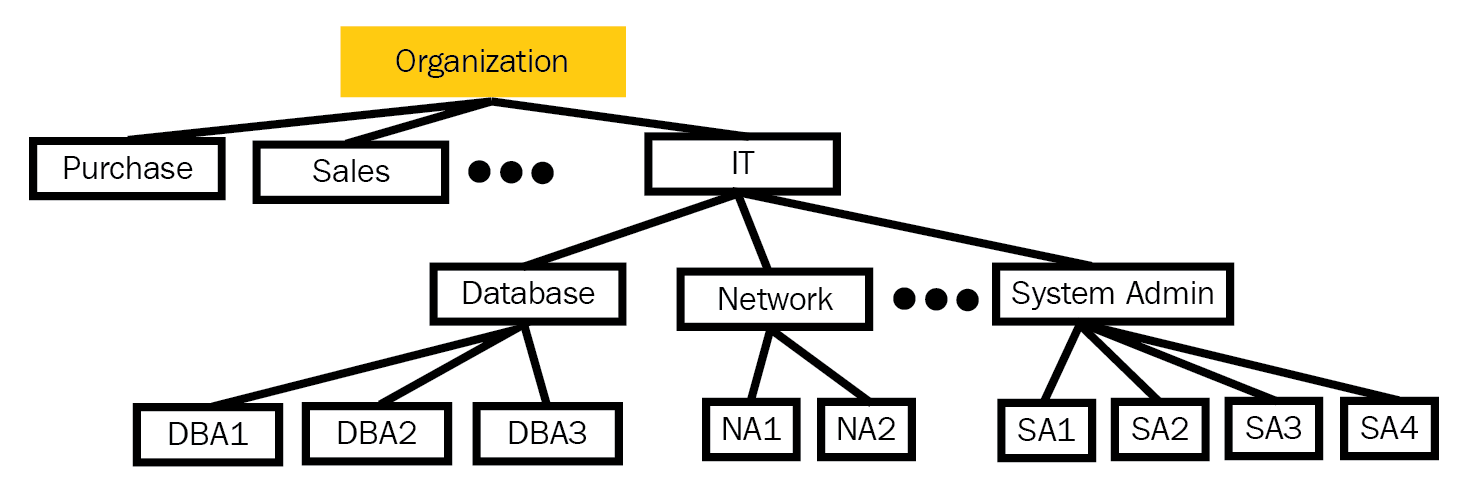Groups
In an organization, people work in different departments (that is, sales, purchase, IT, and so on). Usually, only members from the IT department need to access AWS resources. But it depends on the nature of the organization and its organizational hierarchy. In each department, there can be subdepartments (for example, in IT, there can be many branches, such as development, testing, operations, quality, security, and network). Each subdepartment may have several people working in it. An organizational hierarchical structure looks something like the following:

Figure 3.14: Logical representations of organizational entities
It is easy to manage privileges for a few users individually, but it becomes increasingly difficult to manage these users separately as the user base increases. Most of the time, when users belong to the same department with same or similar roles and responsibilities, their privileges requirement may also be the same. In such scenarios, it is recommended that you divide...




































































